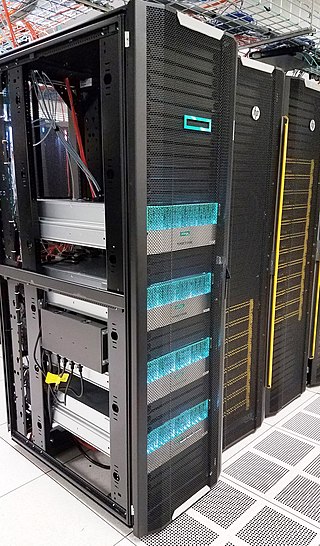
Safety engineering is an engineering discipline which assures that engineered systems provide acceptable levels of safety. It is strongly related to industrial engineering/systems engineering, and the subset system safety engineering. Safety engineering assures that a life-critical system behaves as needed, even when components fail.

Fault tree analysis (FTA) is a type of failure analysis in which an undesired state of a system is examined. This analysis method is mainly used in safety engineering and reliability engineering to understand how systems can fail, to identify the best ways to reduce risk and to determine event rates of a safety accident or a particular system level (functional) failure. FTA is used in the aerospace, nuclear power, chemical and process, pharmaceutical, petrochemical and other high-hazard industries; but is also used in fields as diverse as risk factor identification relating to social service system failure. FTA is also used in software engineering for debugging purposes and is closely related to cause-elimination technique used to detect bugs.
Logistics engineering is a field of engineering dedicated to the scientific organization of the purchase, transport, storage, distribution, and warehousing of materials and finished goods. Logistics engineering is a complex science that considers trade-offs in component/system design, repair capability, training, spares inventory, demand history, storage and distribution points, transportation methods, etc., to ensure the "thing" is where it's needed, when it's needed, and operating the way it's needed all at an acceptable cost.
In systems engineering, dependability is a measure of a system's availability, reliability, maintainability, and in some cases, other characteristics such as durability, safety and security. In real-time computing, dependability is the ability to provide services that can be trusted within a time-period. The service guarantees must hold even when the system is subject to attacks or natural failures.

Xinhui, alternately romanized as Sunwui and also known as Kuixiang, is an urban district of Jiangmen in Guangdong, China. It grew from a separate city founded at the confluence of the Tan and West Rivers. It has a population of about 735,500, 98% of whom are Han Chinese but many of whom speak a dialect of Cantonese as their first language. Xinhui is best known in China for its chenpi, a kind of dried Mandarin orange peel.

NonStop is a series of server computers introduced to market in 1976 by Tandem Computers Inc., beginning with the NonStop product line. It was followed by the Tandem Integrity NonStop line of lock-step fault tolerant computers, now defunct. The original NonStop product line is currently offered by Hewlett Packard Enterprise since Hewlett-Packard Company's split in 2015. Because NonStop systems are based on an integrated hardware/software stack, Tandem and later HPE also developed the NonStop OS operating system for them.
Reliability engineering is a sub-discipline of systems engineering that emphasizes the ability of equipment to function without failure. Reliability describes the ability of a system or component to function under stated conditions for a specified period of time. Reliability is closely related to availability, which is typically described as the ability of a component or system to function at a specified moment or interval of time.

In engineering, redundancy is the intentional duplication of critical components or functions of a system with the goal of increasing reliability of the system, usually in the form of a backup or fail-safe, or to improve actual system performance, such as in the case of GNSS receivers, or multi-threaded computer processing.
Reliability, availability and serviceability (RAS), also known as reliability, availability, and maintainability (RAM), is a computer hardware engineering term involving reliability engineering, high availability, and serviceability design. The phrase was originally used by International Business Machines (IBM) as a term to describe the robustness of their mainframe computers.
A hazard analysis is used as the first step in a process used to assess risk. The result of a hazard analysis is the identification of different types of hazards. A hazard is a potential condition and exists or not. It may, in single existence or in combination with other hazards and conditions, become an actual Functional Failure or Accident (Mishap). The way this exactly happens in one particular sequence is called a scenario. This scenario has a probability of occurrence. Often a system has many potential failure scenarios. It also is assigned a classification, based on the worst case severity of the end condition. Risk is the combination of probability and severity. Preliminary risk levels can be provided in the hazard analysis. The validation, more precise prediction (verification) and acceptance of risk is determined in the risk assessment (analysis). The main goal of both is to provide the best selection of means of controlling or eliminating the risk. The term is used in several engineering specialties, including avionics, food safety, occupational safety and health, process safety, reliability engineering.

The Hong Kong–Shenzhen Western Corridor, also known for the main component Shenzhen Bay Bridge, is a cross-border highway between Shenzhen, Guangdong Province and Hong Kong. The highway bridge is a 5.5-kilometre (3.4 mi) dual three-lane controlled-access highway. It connects Ngau Hom Shek, Hong Kong, to Dongjiaotou, which is administratively located in Nanshan District of Shenzhen. The corridor also had other components, a border checkpoint Shenzhen Bay Port, built on reclaimed land, as well as roads that connect the corridor to the existing road network of Shenzhen.

Zhiming Liu is a computer scientist. He studied mathematics in Luoyang, Henan in China and obtained his first degree in 1982. He holds a master's degree in Computer Science from the Institute of Software of the Chinese Academy of Sciences (1988), and a PhD degree from the University of Warwick (1991). His PhD thesis was on Fault-Tolerant Programming by Transformations.
N-version programming (NVP), also known as multiversion programming or multiple-version dissimilar software, is a method or process in software engineering where multiple functionally equivalent programs are independently generated from the same initial specifications. The concept of N-version programming was introduced in 1977 by Liming Chen and Algirdas Avizienis with the central conjecture that the "independence of programming efforts will greatly reduce the probability of identical software faults occurring in two or more versions of the program". The aim of NVP is to improve the reliability of software operation by building in fault tolerance or redundancy.
The 1918 Shantou earthquake occurred in Shantou, Guangdong, Republic of China. Serious damage and high casualty numbers were reported in Guangdong and the surrounding provinces. It also caused some damage in colonial Hong Kong.

The Hong Kong Institution of Engineers is a professional body of engineers in Hong Kong. It was founded in 1947 as the Engineering Society of Hong Kong and was incorporated by the Legislative Council of Hong Kong as The Hong Kong Institution of Engineers in 1975. The institution aims to facilitate the exchange of knowledge and ideas, train the members in new technology and practices, and to raise the standing and visibility of engineers. It has a membership of more than 30,000 under 21 different engineering disciplines.

T.H. Tse is a Hong Kong academic who is a professor and researcher in program testing and debugging. He is ranked internationally as the second most prolific author in metamorphic testing. According to Bruel et al., "Research on integrated formal and informal techniques can trace its roots to the work of T.H. Tse in the mid-eighties." The application areas of his research include object-oriented software, services computing, pervasive computing, concurrent systems, imaging software, and numerical programs. In addition, he creates graphic designs for non-government organizations.
Chaos engineering is the discipline of experimenting on a system in order to build confidence in the system's capability to withstand turbulent conditions in production.
Chen Guangxi was a Chinese engineer, computer scientist, and professor who founded the discipline of computer science at the Harbin Institute of Technology.








